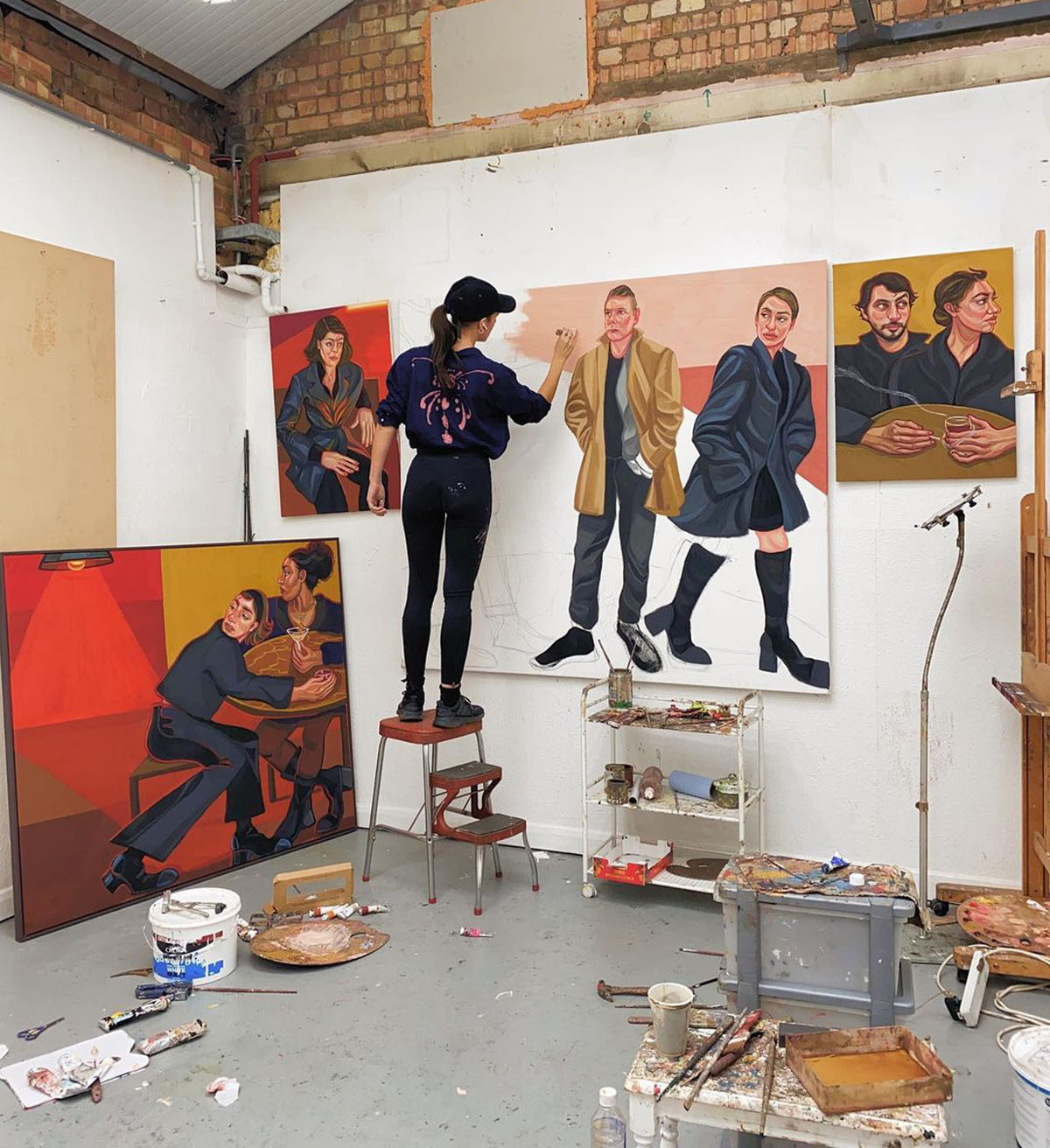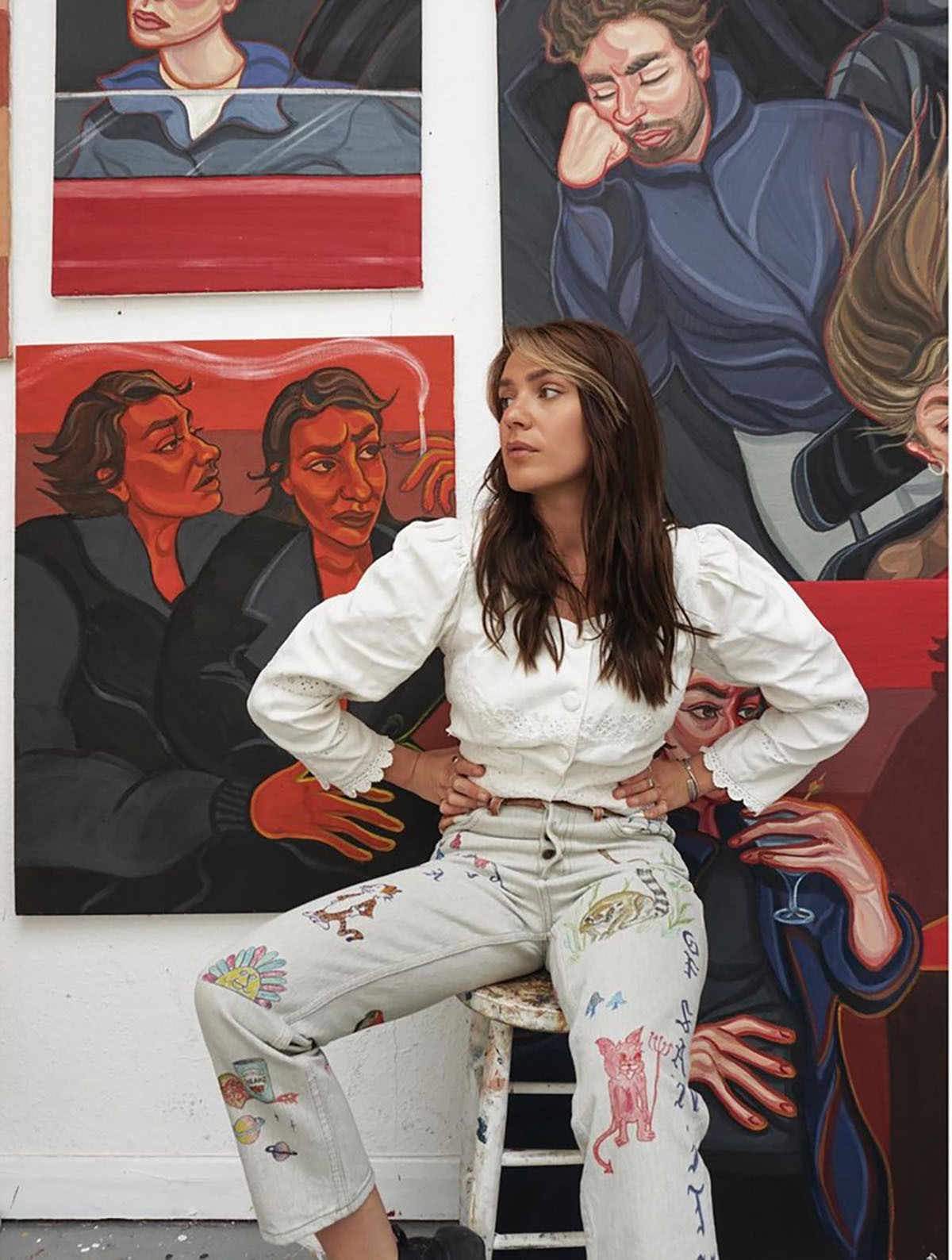Ania Hobson is a figurative painter who creates celebratory portraits of millennial women and is quickly gaining a name throughout the art world. In 2018 she received the Young Artist Award at the National Portrait Gallery’s BP Portrait Awards in recognition of her painting A Portrait of Two Female Painters (2018). Drawing inspiration from both Alice Neel and Kerry James Marshall, Hobson’s oil paintings feature friends and peers rendered in thick impasto. Her female subjects are shown as strong and unworried as they chat among friends or glance thoughtfully from beyond the frame. She often presents her figures from high or low vantage points, which bestows them with imposing, monumental presences. We were delighted to speak to Ania to see what exactly goes on inside the studio!
What inspired me to become an artist was from a young age, people seemed to like my work and asked me to do paintings for them quite early on - which lead me onto thinking it was something I could take further. Being a painter was always looked at as something that was never going to be easy or financially stable. I found these challenges rewarding, it’s been a massive journey with lots of ups and downs but it’s all part of your career and developing in your work.

My style seems to have developed naturally through research and numerous gallery visits over the years. I never wanted to be seen as a traditional painter but if you’re going to work with portraits and figurative work you will inevitably find yourself looking at the old masters, for instance I was massively inspired by Paula Rego, Alice Neel, Toulouse Lautrec and Otto Dix. My style has developed over time and the changes have never been a forced process but I think I found my style after a period of ‘painters block’. I stepped back and took a month off from painting, and instead I watched artist documentaries and visited exhibitions to give myself some time to readjust and let my head breathe and once I was back to painting I felt that I had found my style that sat with my hand very comfortably.

Painting a smile is really not leaving much to the imagination, it’s one emotion that we can all read. Not smiling can mean many things, which always leads people onto say things like ‘what are you thinking?’ it doesn’t necessarily mean you’re sad or angry, It can be anything, it’s more internal and secretive and it gives the viewers a take on your painting and to how they would like to read into It. Perhaps it also makes more of a story?
It’s a nice way of involving the viewers in your work and letting them be part of it. I always paint the people closest to me, being comfortable with your muses is really important and it creates more fluidity in your work as there’s less pressure.

I stretch my own canvases and pre-make all my skin tones in tubes. I work quite fast and I find it very time consuming to sit and mix all the colours before I start to work on the canvas, so I prefer to have them already made. When painting I like to use hog bristled brushes as I work with thick paint and they really lend themselves to keeping the texture and brush marks. I am terrible at keeping my brushes clean but I actually prefer using them this way as over time they become a little harder and I find it adds to the mark making.


My experience was very good at both the schools. I did the short courses as the technique teaching is more intensive. It’s tiring but by the end of it I knew what colours to use for creating skin tones and experimenting with the cool and warm tones of the face. Being in Florence was the best experience as you’re thrown into a beautiful city with not all the renaissance paintings and beautiful architecture. I still use these techniques today and am really grateful that I did these great courses.
I really enjoy my studio, I use to work from home but I think it’s important to have a space that is your own and away from any distractions. It has a very high ceiling and a chequered tiled floor with lots of light coming through the roof and windows. You need to be able to look forward to going to work and that definitely puts me in the right mind set to paint.

It’s hard to keep yourself away from distractions but I find having some ideas that you really want to get out there is enough for me, I need to feel excited about what I'm producing and naturally that will keep me focused. My painting is my job, I am full time so I have to train myself and create deadlines for myself. Taking a day off is always important, it allows me to reflect on my work and it makes me look forward to going back to the studio.
Be sure to follow Ania on Instagram @ania_hobson and check out her website here.
